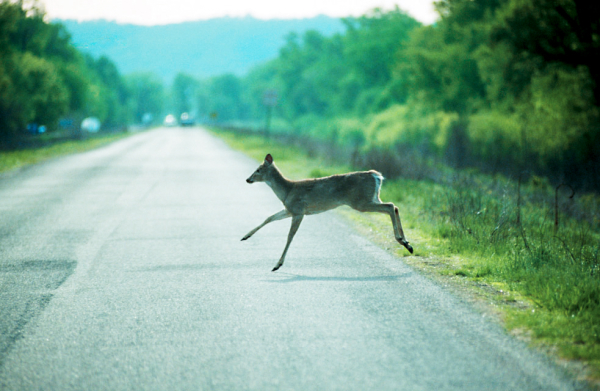

|
Vehicle accidents with white-tailed deer are common in the fall, and drivers need to be alert to the danger, according to Whitetails Unlimited Executive Director Pete Gerl. “There are hundreds of thousands of accidents with deer nationwide, and the only way to prevent them is for drivers to be alert to the danger,” Gerl said. “Drivers need to be aware that deer are more active in the fall, particularly during the hours around dusk and dawn.”
During the fall and early winter deer need to find extra food sources to survive the winter, and they often find excellent food sources along roads and highways. In addition, Fall is the time of year when deer are engaged in mating, and do not act with their normal level of caution. Deer are primarily active at night, so dawn and dusk are main travel times as they move from bedding areas to feed in the evening, and back in the morning.
There are a number of things a driver can do to be safer during this time of year:
Seeing a deer in the woods is a wonderful treat, but it’s scary when you see one in front of you when you’re driving. Be careful out there.
– END –
About Whitetails Unlimited:
Since our beginning in 1982, Whitetails Unlimited has remained true to its mission and has made great strides in the field of conservation. Thanks to more than 475 chapters, 114,000-plus members, chapter volunteers, and corporate sponsors, Whitetails Unlimited has earned the reputation of being the nation’s premier organization dedicating its resources to the betterment of the white-tailed deer and its environment. Our mission is to raise funds in support of educational programs, wildlife habitat enhancement and acquisition, and preservation of the shooting sports and hunting tradition for future generations. To date, Whitetails Unlimited has expended more than $102.7 million on program services and activities that continue to enhance, and ultimately foster, our mission. Stay connected with us: Facebook, Instagram, Twitter, WTU Website
--
For more information, contact:
Jeff Davis, Whitetails Unlimited Manager of
Communications: (920) 743-6777, ext. 122